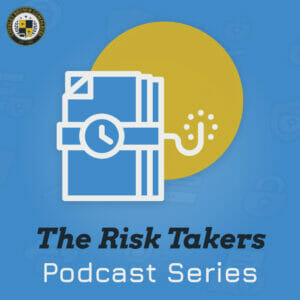Summary:
- Supply chain disruptions can create security gaps at ports, warehouses, and in last-mile delivery.
- Criminal networks are targeting those gaps more often during delays, reroutes, and staffing changes.
- In 2025, risks include cyber threats, insider activity, and vendor compliance failures, alongside traditional cargo theft.
- Stronger visibility, vendor accountability, and regular assessments are key to reducing exposure.
- Logistics security is becoming a competitive advantage, not just a loss prevention measure.
The Human Side of a Global Problem
It started with a call just before sunrise.
A regional operations manager learned a high-value shipment never made it from the port to the warehouse. The truck was found hours later, empty.
The thing that bothered him most was not the loss itself, but how it all seemed obvious in hindsight.
There had been delays at the port. The route had been changed. A temporary driver had been assigned. One scheduled check-in never happened.
More leaders are asking the same question in 2025: Are we treating supply chain security as a core part of operations, or are we only thinking about it when something goes wrong?
How Supply Chain Disruptions Create Security Risks
When a shipment slows down or changes direction, security risks change with it.
- Cargo sitting idle is easier to target.
- New routes can mean unvetted facilities or partners.
- Staffing changes can introduce insider risk.
- Disruption can distract teams from following security protocols.
In other words, every operational hiccup can open a new door for someone looking to take advantage.
The 2025 Supply Chain Threat Map
Ports and Points of Entry
Ports involve many different players: port authorities, customs, carriers, and third-party handlers. Each has its own processes and security standards, which can leave gaps. Delays often mean cargo sits in staging areas longer than planned, sometimes with minimal oversight.
Warehouses and Distribution Centers
Inventory swings, seasonal staffing, and varying security practices between facilities make warehouses a common point of exposure. Inconsistent background checks and blind spots in surveillance can leave goods vulnerable for days without detection.
Last-Mile Delivery
In the final stage, shipments often move in smaller vehicles with predictable routes. Without strong tracking and verification, it’s easier for a bad actor to stage a stop, impersonate a driver, or redirect a delivery.
Why This Year Feels Different
The risks aren’t necessarily new, but several trends are making them harder to manage at once.
- Labor shortages have increased reliance on temporary staff and subcontractors.
- Greater use of technology has brought new benefits, but also new cyber risks like GPS spoofing and data theft.
- Economic pressure has pushed some vendors to cut corners on security.
- Geopolitical instability has led to longer customs inspections and more frequent reroutes.
This combination means companies need broader visibility and more consistent standards across the chain.
Practical Steps to Improve Logistics Security
Expand Risk Assessments
Look beyond your own facilities. Include ports, carriers, cross-docks, and last-mile partners. Confirm whether they meet your standards in practice, not just on paper.
Use Protective Intelligence
Monitoring open sources, industry chatter, and route-specific crime patterns can give you early warning. That allows you to change schedules, routes, or security measures before an incident happens.
Set Clear Vendor Standards
Include specific, auditable security requirements in contracts. Make it clear that you expect both physical and cyber safeguards.
Pair Technology with Human Oversight
Tools like GPS tracking and cargo sensors are valuable, but only if someone is actively reviewing the data and ready to respond.
Train for Real Scenarios
Run drills for theft, diversion, and cyber interference so teams know what to do before they are in the middle of an incident.
The Executive Perspective
For company leaders, strong supply chain security protects more than goods. It preserves customer relationships, helps meet contractual obligations, and prevents costly disruptions. In a competitive environment, demonstrating that your operations are secure can be the deciding factor in winning or keeping business.
When your name is on the door, risk is personal. Protecting the supply chain protects your reputation.
FAQs: Supply Chain and Logistics Security in 2025
How do supply chain disruptions impact security?
Delays, reroutes, and staffing changes can introduce new vulnerabilities at every stage, from ports to last-mile delivery.
What is the most common risk right now?
Cargo theft is still a major issue, but insider activity and cyber-enabled interference with routing and tracking systems are growing.
How can mid-sized companies strengthen supply chain security without hiring a CSO?
Consider using a fractional security leader or specialized consulting firm to manage assessments, vendor alignment, and intelligence monitoring.
Is cargo theft increasing in 2025?
Yes, industry data shows theft rates rising during periods of high disruption, such as labor strikes or weather-related delays.
What role does technology play?
Technology improves visibility, but it must be paired with active monitoring and trained staff to be effective.
Sign up!
For industry-leading guides and analysis sign up for our blog below.
Latest News
Podcast | Risk Takers Series #07 Jack Barsky – Former KGB Spy
As part of our on going conversation around corporate espionage, we decided to sit down with a real KGB spy for some insider knowledge. In this week’s episode, Brent sits down with author and former…
Read Morerisk-takers #06. Human Trafficking with Bazzel Baz
Human trafficking touches nearly every city, county, state and locality in America. Yet law enforcement remains critically under prepared to handle this insidious business. Bazzel Baz, star of NBC’s hit show The Blacklist, and real life CIA super spy is often refereed to as the patron saint of missing children. In this week’s episode Baz sits down with Brent and Dell to discuss the ways human trafficking affects our communities us and how we can stop it. This is a fascinating discussion looking into the darker side of human nature — you don’t want to miss it!
Read MorePodcast | Risk Takers Series #06. Human Trafficking with Bazzel Baz
Human trafficking touches nearly every city, county, state and locality in America. Yet law enforcement remains critically under prepared to handle this insidious business. Bazzel Baz, star of NBC’s hit show The Blacklist, and real…
Read Morerisk-takers #05 Corporate Counterespionage
Its not always the stuff of cold war spy novels but corporate or economic espionage continues to affect businesses all over the world both large and small at an exponential rate. It seems like there’s a new breach every time you turn on the news. The difference is the biggest companies have the resources and budget the protect themselves. But where does that leave SMBs? In this week’s episode, Brent and Dell Spry sit down to discuss the growing threat of corporate espionage, how businesses are exposing their intellectual property. They’ll also cover simple steps small businesses can take to stop those efforts in their tracks. Tune in to this fascinating discussion.
Read MorePodcast | Risk Takers Series #05 Corporate Counterespionage
Its not always the stuff of cold war spy novels but corporate or economic espionage continues to affect businesses all over the world both large and small at an exponential rate. It seems like there’s…
Read More




